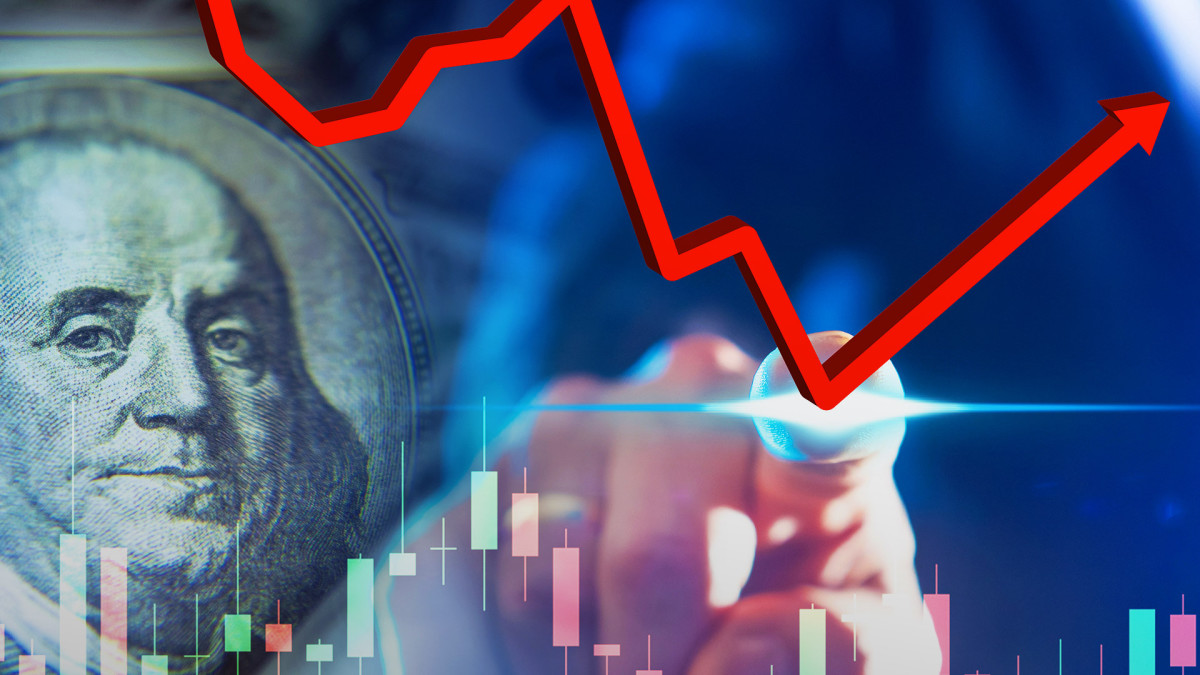
Stocks continued to track day-to-day moves in the bond market, and benchmark 10-year Treasury notes just hit a one-week low, which could suggest a promising runway for equities heading into the start of the year.
The S&P 500 hit a 52-week high Friday, powered partly by the pullback in Treasury yields that took 10-year note yields down to 3.92%, the lowest in a week. Benchmark 2-year notes, meanwhile, fell to the lowest levels since May and ended the day at 4.14%.

Shutterstock-Gorodenkoff
That puts the difference between 2-year and 10-year notes at just 20 basis points, or 0.2 percentage point. That level was last seen in late October when the current stock rally began as the Federal Reserve signaled the potential for rate cuts in 2024.
All three moves were tied to a softer-than-expected reading for producer-price inflation. That in turn feeds into both consumer-price index calculations and the Federal Reserve's preferred Personal Consumption Expenditure price index gauge, key measures with big implications for the stock market.
Wholesale prices eased in December
Factory gate inflation, a measure of the prices paid to factories before goods leave the building, fell 0.1% in December and rose just 1% when compared with the year-earlier period, suggesting that prices of goods declined steeply.
Related: Inflation ticks higher in December, testing Wall Street's Fed rate-cut bets
The core producer-price index reading, which strips out food and energy costs, edged 0.2% higher on the month and 2.5% on the year, with both readings coming in shy of Wall Street forecasts.
"This is far more important than yesterday’s slightly disappointing core CPI numbers; core PCE is what matters for the Fed, and these data will increase the pressure on policymakers to ease soon," said Ian Shepherdson of Pantheon Macroeconomics.
Bank of America's closely tracked Flow Show report, published Friday, also highlighted the historical context of the CPI. It noted that only five rate cuts over the past 90 years – all of them linked to either war or recession – had come when core inflation was north of 3.9%.
Commerce Department data Thursday showed that core inflation eased to 3.9%, the lowest in two years.
Bets on March rate cuts ramp up
Traders are pricing in a 76% chance the Fed will start cutting rates in March, up from 64% at the start of the year, with the odds of a follow-on move in May pegged at around 80%.
The narrowing gap between 2-year and 10-year notes, meanwhile, points to a potential steepening of the so-called yield curve, a term that describes the plotting of benchmark interest rates ranging from one week to 30 years.
More From Markets:
- Veteran fund manager picks favorite stocks for 2024
- Bitcoin ETF approval opens $1.7 trillion crypto door for Wall Street
- Gas prices slide, testing $3 a gallon, as oil slumps on demand concern
An inverted yield curve, where short-term yields are higher than longer-term yields, suggests investors are concerned about inflation, and bearish on growth. An inverted yield curve is also a classic Wall Street recession signal.
A steeper yield curve, where short-term rates are lower than longer-term ones, is crucial for bank profitability. That's because most banks fund their day-to-day activities with short-term borrowing while lending to customers and businesses on a longer-term basis.
A decline in producer price inflation, meanwhile, enables companies outside the financial sector to hold their current profit margins in place, particularly as consumer-price pressures ease and give customers stronger purchasing power.
"The message from the PPI report is very clear: Inflation is headed lower," said Bill Adams, chief economist for Comerica Bank in Dallas. "Other leading indicators of the CPI, like the ISM PMI price surveys, likewise show that business-input costs are much less inflationary than in 2021 or 2022 and that inflation is headed lower as 2024 begins."
That ties nicely into the current resiliency of the labor market, where the unemployment rate remains near a multidecade low of 3.7% after a better-than-expected 216,000 new hires were added to the economy last month.
S&P 500 profits key to market performance
Collectively, the fading inflation prospects, alongside goods deflation at the wholesale level, should enable expanded near-term profit forecasts for the S&P 500, while sliding Treasury bond yields will make the potential gains in the index more attractive versus the risk-free alternative.
Data from LSEG suggest Wall Street analysts are estimating collective S&P 500 profits rose 5.2% during fourth-quarter 2023 from the year-earlier quarter, to a share-weighted $457.2 billion.
Overall profit growth for the whole of 2024, meanwhile, is expected to be around 11.1%.
"Much of 2024's stock market performance will actually depend on earnings estimates for 2025, as the stock market is a discounting mechanism," said David Bahnsen, chief investment officer at Bahnsen Group. The Newport Beach, Calif., firm manages roughly $5 billion of assets.
"Right now, earnings expectations feel very optimistic for both 2024 and 2025, with Wall Street expecting low double-digit earnings growth for both years," he added.
"A deviation from those forecasts, either up or down, could cause stock market volatility in both directions, especially during the second half of 2024, which is the main point in time when markets will start to price in 2025 earnings expectations."







